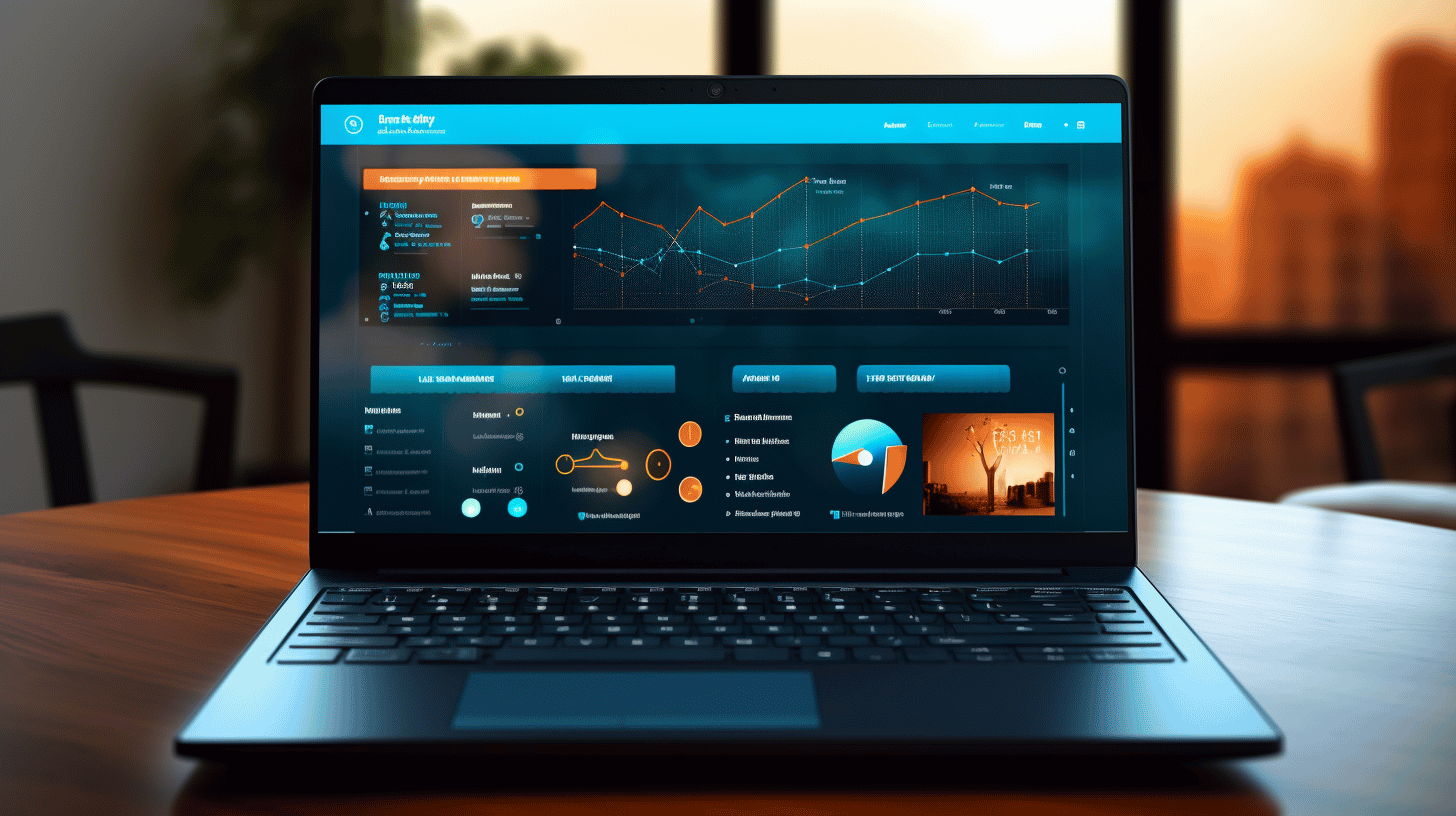Securing your IT infrastructure is crucial in today’s digital landscape, especially if you’re a WordPress site owner. With cyber threats on the rise and hackers becoming more sophisticated, it’s essential to take proactive measures to protect your valuable data and ensure the smooth running of your website.
In this comprehensive guide, we’ll explore the current state of cybersecurity, the future growth of cloud and server security, the costs of data breaches, and most importantly, the specific security measures you can implement for your WordPress site. Whether you’re a small business owner or a seasoned web developer, this guide will equip you with the knowledge and tools to safeguard your website and maintain peace of mind.
So, let’s dive in and fortify your IT infrastructure against potential threats! 🔒
Current State of Cybersecurity
The current state of cybersecurity is more critical than ever before. With advancements in technology and an increasing number of online threats, organizations must stay vigilant to protect their sensitive data and networks. In this section, we will discuss some anticipated major breaches, the staggering damages caused by cybercrime, the rise of cloud-based breaches, and the role of generative AI in phishing attacks.
Anticipated Major Breaches
According to a recent survey, a staggering 77% of security leaders anticipate a major breach involving critical infrastructure. This is a cause for concern as such breaches can have far-reaching consequences, impacting not only the targeted organizations but also potentially compromising essential services and systems. With the ever-evolving tactics employed by hackers, it is crucial for businesses to adopt a proactive and multi-layered approach to ensure comprehensive security measures are in place.
Cybercrime Damages
The financial impact of cybercrime is truly alarming. In 2021, it is estimated that cybercrime damages will exceed $6 trillion per year. This astronomical figure highlights the significant threat that organizations face in terms of financial loss, reputation damage, and potential legal liabilities. From ransomware attacks to data breaches, the consequences of these cybercrimes can be devastating for both small businesses and large enterprises.
Cloud-based Breaches
The adoption of cloud computing has revolutionized the way businesses operate, providing flexibility, scalability, and cost-efficiency. However, it has also introduced new challenges in terms of security. According to recent studies, 45% of breaches are cloud-based, and a staggering 80% of companies have experienced at least one cloud security incident in the past year. This underscores the importance of implementing robust security measures to protect sensitive data stored in the cloud and ensuring strict access controls are in place.
Generative AI and Phishing Attacks
Advancements in artificial intelligence have not only benefited legitimate applications but have also been leveraged by cybercriminals to orchestrate highly sophisticated phishing attacks. Generative AI tools have made it easier for attackers to create convincing and personalized phishing emails, making it increasingly difficult for users to distinguish between legitimate and malicious messages. In fact, a whopping 85% of security professionals have attributed generative AI tools to the increasing number of phishing attacks. Organizations must prioritize employee education and implement advanced email filters and security measures to mitigate the risk of falling victim to these deceptive attacks.
Cybersecurity is an ongoing battle, and staying ahead of the ever-evolving threats requires continuous effort and investment. By adopting a proactive and holistic approach to security, organizations can minimize the risks and protect their valuable assets from the ever-growing threat landscape.
To learn more about website security and how to protect your business, check out Mastering Website Security.
Cloud and Server Security: Future Growth and Current Breaches
In today’s digital age, where data is king, ensuring the security of cloud and server systems is of utmost importance. With businesses relying more and more on cloud services for storage, computing power, and software applications, the growth potential of the cloud market is undeniable. At the same time, the threat of security breaches looms large, with server vulnerabilities being a prime target for cybercriminals. Let’s delve into the future growth prospects of the cloud industry and the current landscape of server security breaches.
Future Growth of Cloud Segments
By 2024, all cloud segments are expected to experience substantial growth. However, it is Infrastructure-as-a-Service (IaaS) that is predicted to have the most significant surge in demand. As companies recognize the benefits of offloading their infrastructure management to cloud service providers, the IaaS market is projected to grow tremendously. This growth is fueled by factors such as scalability, cost-effectiveness, and the ability to quickly provision resources on-demand.
Looking at the bigger picture, the cloud market as a whole is anticipated to witness a compound annual growth rate (CAGR) of XX% over the next few years, reaching a market size of $XXX billion by 2025. This exponential growth can be attributed to the numerous advantages that cloud services offer, including:
- Flexibility: Cloud infrastructures enable businesses to scale their resources up or down based on demand, allowing for greater agility in a rapidly changing business landscape.
- Cost Savings: By utilizing cloud services, organizations can reduce their capital expenditure on hardware and physical infrastructure, as well as the costs associated with maintaining and upgrading it.
- Accessibility: Cloud computing makes it easier for employees to access data and applications from anywhere, at any time, facilitating remote work and collaboration.
- Enhanced Security: Cloud service providers invest heavily in implementing robust security measures that often surpass what an individual company can achieve on its own.
Server Security Breaches
While the cloud market presents promising growth opportunities, it is essential to acknowledge the existing challenges in server security. Servers remain a prime target for cybercriminals, with an alarming statistic revealing that 90% of security breaches occur through server vulnerability exploits. This highlights the urgent need for robust security measures and continuous monitoring to safeguard sensitive data and prevent unauthorized access.
The consequences of a server breach can be devastating, ranging from financial losses and reputational damage to legal consequences and loss of customer trust. To mitigate the risks, companies must take proactive measures, including:
- Regular Patching and Updates: Ensuring that servers are up to date with the latest security patches and software updates is critical to addressing any known vulnerabilities.
- Strong Authentication and Access Controls: Implementing strict access controls, multi-factor authentication, and strong password policies help prevent unauthorized access to servers.
- Network Segmentation: Dividing the network into segments with restricted access can contain potential breaches and limit the lateral movement of attackers.
- Continuous Monitoring and Intrusion Detection Systems: Deploying robust monitoring systems that detect any suspicious activities or unauthorized access attempts can enable swift action to mitigate potential threats.
In conclusion, while the future growth of cloud services is undoubtedly promising, it is imperative to address server security vulnerabilities proactively. Companies must invest in strong security measures, employee awareness training, and regular system audits to safeguard their valuable data and protect against potential breaches. By staying vigilant and adopting a security-first mindset, businesses can navigate the evolving landscape of cloud and server security with confidence.
Costs and Variables of Data Breaches
Data breaches have become a significant concern in today’s digital landscape. Not only do they result in financial losses, but they also have long-lasting consequences for businesses. Understanding the costs and variables associated with data breaches is crucial for organizations to mitigate their risks effectively. In this section, we will explore the average cost of data breaches, the surge in cyberattacks against industrial operations, the effect of a remote workforce on data breach costs, and the rise in average cyber insurance claims.
Average Cost of Data Breaches
According to recent statistics, the average cost of a data breach was $4.45 million in 2023[1]. The financial impact of a breach goes beyond immediate financial losses. It includes expenses related to incident response, investigation, legal fees, and regulatory fines. Additionally, there are indirect costs such as reputational damage, customer churn, and diminished customer trust.
Surge in Industrial Operation Cyberattacks
In 2022, there was a staggering 140% surge in cyberattacks against industrial operations[2]. Industrial sectors, such as manufacturing, energy, and transportation, have increasingly become targets for cybercriminals. The motivation behind these attacks can vary from financial gain to disrupting critical infrastructure. Such attacks not only result in significant financial losses but also pose a threat to public safety.
Effect of a Remote Workforce on Data Breach Costs
With the advent of remote work, data breaches have seen an alarming increase. Organizations that embraced remote work models had to adapt their security protocols to ensure the protection of sensitive information. Unfortunately, breaches caused by a remote workforce resulted in an average total cost that was $173,074 higher compared to breaches where a remote workforce was not a factor[3]. This highlights the importance of implementing robust security measures to safeguard remote work environments.
Rise in Average Cyber Insurance Claim
As data breaches become more prevalent and sophisticated, the need for cyber insurance has also increased. Cyber insurance provides financial protection in the event of a data breach or cyberattack. The average cyber insurance claim rose from $145,000 in 2019 to $359,000 in 2020[4]. This significant jump in average claim amount reflects the escalating costs associated with data breaches and the need for adequate coverage to mitigate financial risks.
Data breaches have far-reaching consequences that extend beyond financial losses. Organizations must be proactive in implementing robust security measures and staying informed about the evolving cyber threat landscape. By understanding the costs and variables associated with data breaches, businesses can better protect their sensitive data and minimize the impact of potential breaches.
“Data breaches have far-reaching consequences that extend beyond financial losses. Organizations must be proactive in implementing robust security measures and staying informed about the evolving cyber threat landscape.”
WordPress Security Measures
WordPress is one of the most popular content management systems (CMS) in the world, powering millions of websites. However, its popularity also makes it an attractive target for hackers who are constantly looking for vulnerabilities to exploit. To protect your WordPress site from potential security threats, it’s important to implement effective security measures. In this article, we will discuss some essential WordPress security practices that can help safeguard your website and ensure its smooth operation.
Updating WordPress Version and Plugins
One of the most crucial steps in ensuring WordPress security is to keep your WordPress version and plugins up to date. Regular updates often include security patches, bug fixes, and new features that can improve the overall security and stability of your site. Here are some key points to consider:
- Update WordPress: When a new version of WordPress is released, make sure to update your site to the latest version. This will help address any known vulnerabilities and keep your site secure.
- Update Plugins: Regularly check for plugin updates and apply them as soon as they become available. Outdated plugins can be a weak point in your site’s security, so it’s important to stay proactive in keeping them up to date.
- Remove Unused Plugins: Uninstall any plugins that are no longer in use. Unused plugins can become outdated and pose a security risk.
Use of Strong, Unique Passwords
Another critical aspect of WordPress security is the use of strong, unique passwords. Weak, easily guessable passwords can leave your site vulnerable to brute force attacks. Follow these best practices for password security:
- Use a Combination of Letters, Numbers, and Special Characters: Create passwords that include a mix of uppercase and lowercase letters, numbers, and special characters. This combination makes it harder for hackers to guess or crack your passwords.
- Avoid Common Passwords: Stay away from easily guessable passwords like “password123” or “123456789.” These are the first passwords hackers will try.
- Use a Password Manager: Consider using a password manager to generate and store strong, unique passwords for your WordPress site. This ensures that you don’t reuse passwords across multiple accounts, further enhancing your security.
Implementation of SSL Certificates, Two-Factor Authentication, and Security Plugins
In addition to updating your WordPress version and using strong passwords, there are additional security measures you can implement to further enhance your website’s security. Consider the following:
- SSL Certificates: Install and enable SSL certificates on your site. SSL, which stands for Secure Sockets Layer, encrypts data transmitted between your site and visitors. This ensures that sensitive information, such as login credentials, is protected from interception by malicious actors.
- Two-Factor Authentication (2FA): Enable two-factor authentication for your WordPress login. 2FA requires users to provide an additional verification code, usually sent to their mobile device, in addition to their password. This adds an extra layer of security to prevent unauthorized access.
- Security Plugins: Install reputable security plugins that can help detect and mitigate potential security threats. These plugins often provide features such as firewall protection, malware scanning, and activity monitoring.
Disabling Plugin and Theme Management from WordPress Dashboard
A good WordPress security practice is to disable plugin and theme management from the WordPress dashboard and use command line tools instead. This adds an extra layer of protection by limiting the potential attack surface. Here’s why:
- Limit Access to Plugin and Theme Management: By restricting access to plugin and theme management, you reduce the risk of unauthorized changes or installations that can compromise your site’s security.
- Use Command Line Tools: Instead of relying solely on the WordPress dashboard, use command line tools like WP-CLI to manage plugins and themes. This minimizes the risk of vulnerabilities resulting from plugin or theme misconfiguration.
By implementing these WordPress security measures, you can significantly reduce the risk of your website falling victim to security breaches. Remember, staying proactive and regularly updating your WordPress site is key to maintaining a secure online presence.
For more detailed information on essential WordPress security practices, check out this article.
Conclusion
In conclusion, securing your IT infrastructure, especially for WordPress site owners, is of paramount importance in today’s cyber landscape. With the anticipated major breaches, the rising cybercrime damages, and the increasing prevalence of cloud-based breaches and generative AI and phishing attacks, protecting your data and online presence is crucial to avoid potential financial and reputational harm.
By implementing robust WordPress security measures such as regularly updating the WordPress version and plugins, using strong and unique passwords, implementing SSL certificates, two-factor authentication, and security plugins, as well as disabling plugin and theme management from the WordPress dashboard, you can greatly mitigate the risks of potential cyber threats.
Remember that the cost of data breaches is not only financial but also has significant implications for the overall operations of businesses. The average cost of data breaches is on the rise, along with a surge in industrial operation cyberattacks and the impact of a remote workforce on data breach costs. Therefore, investing in comprehensive security measures is a wise decision to safeguard your business and user data.
To simplify the process of securing your WordPress site, consider partnering with a reliable managed WordPress cloud hosting platform like Managed-WP™. With their expertise in infrastructure management, 24/7/365 WordPress support, NOC services, backup management, patch management, and proactive monitoring, you can rest assured that your website is in safe hands.
Don’t wait until it’s too late. Take action now to fortify your IT infrastructure and protect your WordPress site from potential cyber threats. Visit Managed-WP.com to learn more about their premium managed WordPress cloud hosting services and how they can help you achieve peace of mind in your digital experiences. 💪🔒
Frequently Asked Questions
- Why is securing my IT infrastructure important for WordPress site owners?
Securing your IT infrastructure is crucial for WordPress site owners to protect sensitive data, prevent unauthorized access, and maintain the integrity and availability of your website. It helps safeguard against cyber threats, hacking attempts, and potential data breaches.
- What are some recommended measures to secure a WordPress site?
To secure a WordPress site, you can implement measures such as using strong and unique passwords, keeping WordPress and plugins up to date, using reliable security plugins, enabling two-factor authentication, regularly backing up your site, and limiting login attempts.
- Are there any security plugins specifically for WordPress?
Yes, there are several security plugins available for WordPress that can help enhance the security of your website. Some popular ones include Sucuri Security, Wordfence Security, iThemes Security, and All In One WP Security & Firewall.
- What steps should I take if my WordPress site gets hacked?
If your WordPress site gets hacked, you should first isolate and secure the compromised website by taking it offline temporarily. Change all passwords, scan your computer for malware, restore from a clean backup, update all plugins and themes, and implement additional security measures to prevent future attacks.
- Is it necessary to hire a professional to secure my WordPress site?
While hiring a professional can provide expert assistance in securing your WordPress site, it’s not always necessary. By following best practices, using reliable security plugins, and staying updated with the latest security recommendations, you can take significant steps to secure your site on your own.



















